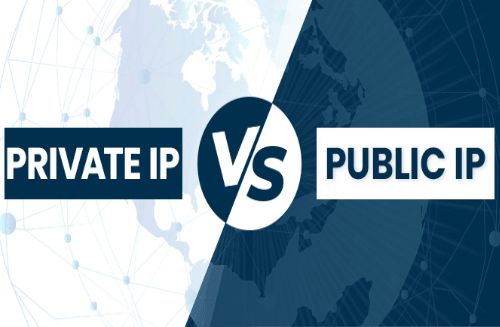
What is the difference between Public IP and Private IP
Public and private IP addresses are two important parts of your device identity that most people rarely consider. But with the massive increase in employees working from home, and cybercrime on the rise, it's increasingly important to understand how your device's IP address can reveal your identity on the internet.
Public IP
The first and the IP that is often used for corporate affairs are public ips, what are the meaning and more complete explanation?
Definition of Public IP
A public IP is an IP address that can be accessed directly over the internet and assigned to your network router by your ISP. Your private device also has a private IP which remains hidden when you connect to the internet via your router's public IP.
Using a public IP address to connect to the internet is like using a P.O. box for your snail mail, rather than giving your home address. It's a little safer but more visible.
Public IP Range
The public IP address range includes any numbers that are not reserved for the private IP range. Since a public IP address is a unique identifier for every device connected to the internet, a public IP address should be just that: unique.
Public IP Example
Any number that doesn't fall within the reserved private IP address range.
10.0.0.0 — 10.255.255.255;
172.16.0.0 — 172.31.255.255;
192.168.0.0 — 192.168.255.255
Example: 10.11.12.13
Private IP
The private IP address is the address your network router assigns to your device. Each device on the same network is assigned a unique private IP address (sometimes called a private network address) — this is how devices on the same internal network talk to each other.
Understanding Private IP
Private IP addresses allow devices connected to the same network to communicate with each other without being connected to the rest of the internet. Private IPs help increase security in certain networks, such as your home or office, by making it difficult for external hosts or users to establish connections.
This is why you can print documents over a wireless connection to your printer at home, but your neighbors can't accidentally send their files to your printer.
Private IP Range
Your private IP range is within a specific private IP address range provided by the Internet Assigned Numbers Authority (IANA) and may not appear on the internet. There are millions of private networks around the world, all of which include devices assigned private IP addresses in the following ranges:
Class A: 10.0.0.0 — 10.255.255.255
Class B: 172.16.0.0 — 172.31.255.255
Class C: 192.168.0.0 — 192.168.255.255
This may not seem like a wide range, but it doesn't have to be.
Private IP Example
Any number that doesn't fall within the reserved private IP address range
Example: 8.8.8.8.
Difference between Public IP and Private IP
The main difference between a public IP address and a private IP is how far they reach, and what they are connected to. A public IP address identifies you to the wider internet so all the information you are looking for can find you.
Private IP addresses are used in private networks to securely connect to other devices on the same network.
Public IP
External reach (global)
Used to communicate outside your private network, via the internet
Unique numeric code that is never reused by other devices
Found by Googling: “What is my IP address?”
Assigned and controlled by your internet service provider
Not free
Private IP
Internal reach (local)
Used to communicate within your private network, with other devices in your home or office
A non-unique numeric code that can be reused by other devices on other private networks
Found through your device's internal settings
Assigned to your specific device in a private network
Conclusion
When you connect to the internet, your private IP address is replaced with the public IP address assigned by your ISP. This protects your private IP and other devices on your network while ensuring you can stay connected online. Both types of IP addresses are essential for your device's connection to the outside world.
So, the two can indeed work in synergy, although they can also work independently.